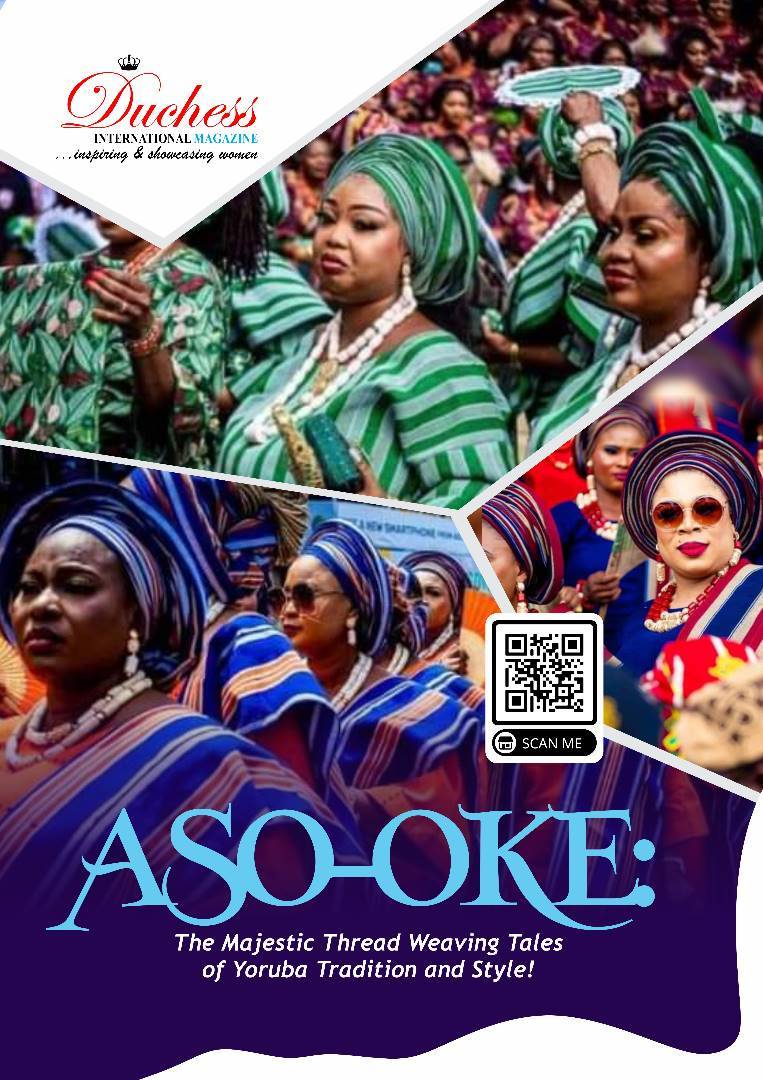Let’s step into the captivating world of Aso-Oke, where threads of heritage, culture, and craftsmanship intertwine to create a fabric that exudes elegance and significance. Let’s unravel the fascinating aspects of this hand-woven treasure that has become an emblem of Yoruba tradition and a symbol of celebration.
- What does the Aso-Oke symbolize?
Aso-Oke isn’t just fabric; it’s a representation of status and prestige. Literally translated as “top cloth,” it holds a special place in Nigerian culture, signifying the importance of the wearer and the occasion. - What is the difference between Aso Ofi and Aso-Oke?
While Aso-Oke and Aso Ofi both hail from the Yoruba people, they differ in technique and purpose. Aso-Oke is typically woven using a handloom and is reserved for special occasions, while Aso Ofi is a broader term encompassing various hand-woven Yoruba fabrics. - What are the types of Aso-Oke?
Aso-Oke weaves its magic through three primary types: Etu, Sanyan, and Arari. Etu, resembling the guinea fowl, features indigo-dyed deep blue with delicate light blue stripes. Sanyan, derived from Anaphe moth cocoons, boasts a soft beige hue and is often used in funerals and weddings. Arari, a deep red marvel woven with magenta waste silk, captures attention with its vibrant allure. - Where is Aso-Oke originally from?
Aso-Oke’s roots dig deep into Yorubaland’s soil, dating back to the 15th century. Its origin is attributed to the resourceful Yoruba people, who transformed cotton into threads and weaved them into a fabric that would weave stories for generations to come. - Where is Aso-Oke made in Nigeria?
The intricate artistry of Aso-Oke flourishes in various Nigerian towns and cities. Places like Iseyin, Oyo, and Ibadan have been nurturing the skilled weavers who master the craft and bring the fabric to life with their hands. - What is the meaning of “Aso” in the Yoruba language?
In the rich Yoruba language, “Aso” translates to “cloth.” Aso-Oke, therefore, encapsulates the essence of fabric in its name, acknowledging its significance in Yoruba clothing tradition. - What is the English name for Aso-Oke?
While Aso-Oke retains its original name across borders, it’s widely recognized as Aso-Oke even in English-speaking regions. Its distinctiveness and cultural prominence make it a name that resonates worldwide. - How many layers is Aso-Oke?
The beauty of Aso-Oke lies not only in its colors and patterns but also in its construction. Typically, it consists of three layers: the Buba (loose-fit top/shirt), the Iro (a large wrapper tied like a wrap-around skirt), and the Gele (a head-tie). Each layer contributes to the grandeur and allure of the complete ensemble. - How much is Aso-Oke?
The price of Aso-Oke can vary depending on factors such as the intricacy of the weave, the type of silk used, and the expertise of the weaver. From affordable options to high-end creations, Aso-Oke offers a range of choices to suit different budgets and preferences.
With its vibrant colors, meticulous craftsmanship, and deep-rooted cultural significance, Aso-Oke continues to mesmerize and evolve. From traditional ceremonies to modern fashion statements, this hand-woven fabric weaves together the past, present, and future of Nigerian style, reminding us of the beauty that lies within our diverse heritage.



